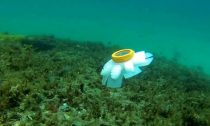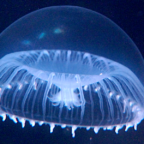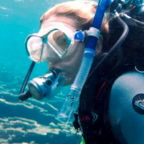
A fleet of robotic jellyfish has been designed to monitor delicate ecosystems, including coral reefs. The underwater drones were invented by engineers at Florida Atlantic University and are driven by rings of hydraulic tentacles. The robots can squeeze through tight holes without causing damage.
One expert praised the design but warned that the man-made jellyfish might be eaten by turtles.
The flexible, 20cm-wide bots are modelled on the appearance of the moon jellyfish during its larval stage.
The design is intended to be less environmentally disruptive than a drone submarine, according to Prof Erik Engeberg, of Florida Atlantic University.
“Mini-submarines are rigid and typically use a propeller for locomotion,” he said. “The propellers can chop up the reef and the tough shell of a sub can cause damage to delicate ecosystems if there is a collision.
“The soft jellyfish robot can avoid these problems with its unorthodox design and locomotion strategy, inspired by biology.”
To move, the robots use eight silicon rubber tentacles powered by pumps. Water flows into the tentacles, filling them up and then – as the pumps are switched off – it flows back into the surrounding sea again.
This propels the robot jellyfish forward and produces a lifelike flapping motion.
Other researchers have modelled robots after jellyfish.
A team from the University of Texas at Dallas, for example, tested a hydrogen-powered bot, while engineers from Virginia Tech have experimented with a mechanical jellyfish measuring 1.7 metres.
The prototypes from Florida Atlantic University are much smaller than this – only 20cm wide.
They can also swim untethered, although this does mean they could drift away if the engineers aren’t careful.
“It is important to track their locations so that they can be retrieved after a mission,” said Prof Engeberg.
Turtle fodder?
Basing a robot on a real organism is “a great idea”, according to Prof John Turner, a marine biologist at Bangor University.
The drone’s jerky movement might not be ideal for recording video or sound, but Prof Turner said it could monitor the health of the reef, for example by spotting changes in oxygen levels, or evidence of erosion.
“Of course one risk might be the drone being consumed by turtles, sea mammals and large fish,” he told the BBC, noting that the robot could have “a harmful effect on the unfortunate animal that swallowed it”.
He said the designers should consider adding an acoustic warning device, or giving the jellyfish an “unpalatable taste”.















Social Profiles